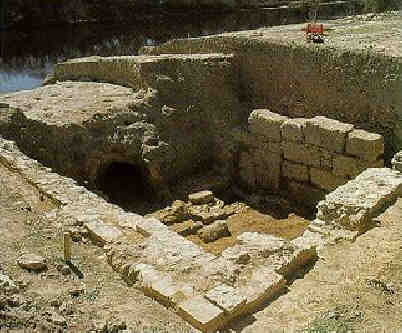 |
BAETICA, THE GREAT OLIVE-OIL EXPORTER |
 |
BAETICA, THE GREAT OLIVE-OIL EXPORTER |
The Roman province of Baetica (Andalusia, Spain) was, according to Roman historians, one of the major olive-oil suppliers. Strabo said in Augustus age that many ships carrying foodstuff (olive-oil among them) arrived at Puteoli (Puzzuoli) from Baetica.
Archaeological field surveys along the Guadalquivir valley has revealed that olive-oil was yielded, as well as amphoras, in a region between Cordoba, Sevilla and Ecija (Southern Spain). This area is a rectangle of nearly 149 x 371 Km. The Guadalquivir, which is 190 Km long, crosses this area forming a diagonal line. This area was occupied from early times because of its mines, also responsible for the wealth economic development of the region. Agriculture became soon other pillar in its economic activity due to soil fertility and abundant fresh water.
Map from the productor centres of amphorae along the bank of Guadalquivir and Genil. (Andalucia, España).
This area included many isolated towns but unified by the river. Along the river banks, more than one hundred pottery workshops have been so far found. This great number of production centres reveals a peculiar organisation of amphora production.
The centres are on the river banks not in the farms which means that kilns worked for nearby villas.

Reconstruction of an kiln to
cook Dressel 20 amphorae.
Some workshops supplied amphoras for a reduced number of producers, whereas others produced amphoras for a myriad of producers.
Some workshops such as the ones in La Catria (Lora del Rio, Sevilla) covered an area of more than 20 Ha. Many employees should have worked there, perhaps temporary. Excavations have shown that kilns were arranged in rows and operated at the same time. The kilns had a round shape and were built with broken sherds of amphoras, they reached a height of 6 metres.
Kiln in Arva (Alcolea del Río, Sevilla).
Kiln in Arva. (Alcolea del Río, Sevilla).

Kiln in el Tejarillo (Alcolea
del Río, Sevilla)
. It’s still 4 metres high